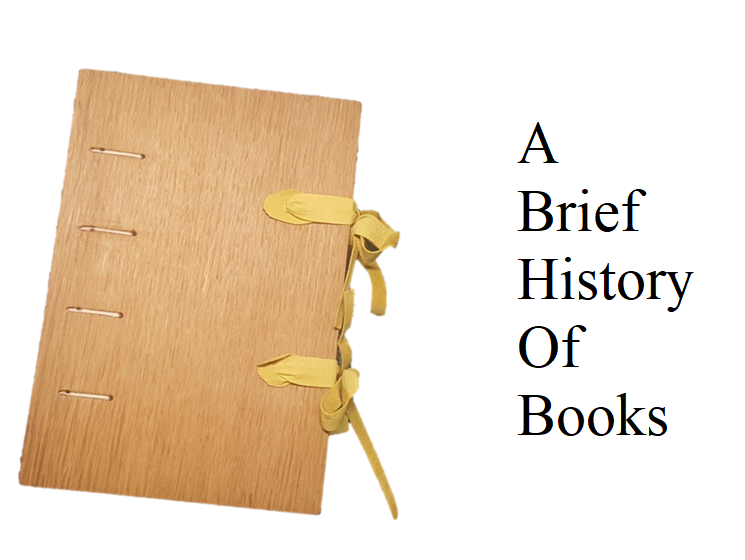Books started with scrolls in Ancient Egypt. These scrolls were rolled up manuscripts made out of papyrus, a plant native to Egypt, and date back to 2400 BC. Parchment such as calf skin or deer skin appeared later around 600 – 200 BC. Scrolls were used by early civilizations before the invention of the Codex and some scrolls are still in use in religious ceremonies today. Scrolls were reintroduced only for documents of great importance during the 17th Century.
Aside from scrolls, the Ancient Greeks used wax tablets in 200 BC. These tablets could be written on, erased and then reused as people would scrape into the wax and then melt the wax away.
Next came the Codex, which is widely believed to be a Roman invention from the 1st Century. It is an ancient book made out of sheets of vellum, parchment or papyrus, bound together with thread and attached to hard boards (often wood). The earliest surviving fragments from codices come from Egypt, dated between the 1st – 2nd Century. The Codex can be considered the great, great, grandfather of modern book binding.
Cai Lun, a court eunuch from China, is believed to be the first person to invent paper in the 2nd Century. He designed a way to mass produce paper using tree bark, hemp ends, old rags and fish nets.
Illuminated manuscripts appeared around the 7th Century with beautiful, colourful, hand-drawn, illustrations on parchment.
The earliest printed book according to the British Library, is thought to be a Chinese version of the Diamond Sutra, it was printed using a carved block of wood in the 9th Century. This technique is called woodblock printing. However, the first Chinese translation of the Diamond Sutra dates back to the 5th Century, as 4th and 5th Century monks, Asanga and Vasubandhu authored commentaries on its contents.
Western Books from the 5th Century were pages made from folded parchment, sewn onto strong cords and attached to wooden boards, usually covered with leather. These early books were handwritten and had flat spines, rounding of the spine didn’t appear until the 15th Century.
Due to folding paper, housing them inside one another, stacking them and then sewing these pages together, this creates a ‘swell’ at the spine of the book. Before the 15th Century, book ‘swell’ was sometimes accommodated by shaping the boards of the books, the inner edges of the boards would be tapered. During the 15th Century rounding and backing was used to round the spine and distribute the ‘swell’, the spine would be hammered to create a mushroom-like shape and a shoulder to house the book boards.
Moveable Type was developed in Europe by a German goldsmith called Johannes Gutenberg in the 15th Century. This revolutionised the writing and printing of information, leading to the invention of the printing press. The earliest moveable type was actually invented by Bi Sheng in China sometime between the 11th and 13th Century, this type was made with wooden blocks and then replaced with ceramic tablets. Metal moveable type was first created in Korea during the 14th Century.
In the 18th Century Chlorine was discovered and later used to bleach the pages of books to give them a uniform, white, clean look.
During the 19th Century printed dust wrappers or dust jackets began to appear on hardcover books.
The earliest paperback books in the U.K. were created in the 19th Century as an alternative to pamphlets. Paperback books were created for the mass-market in the 1930’s, the iconic Penguin paperbacks with their colour-coded spines are still collected today. The spines of these book were glued rather than stapled or sewn, and the pages were usually lower quality paper. This then led to the modern paperback we see in bookshops today.
References:
The History of Book Printing and Binding (springfieldprinting.com)
https://sfbook.com/the-evolution-of-the-book.htm
History of publishing – Forms of copyright | Britannica
A little history of reading: How the first books came to be | BookTrust
How the invention of the book changed how people read | The British Academy
Who invented Books? Inventions and Inventors for kids*** (who-invented-the.technology)
